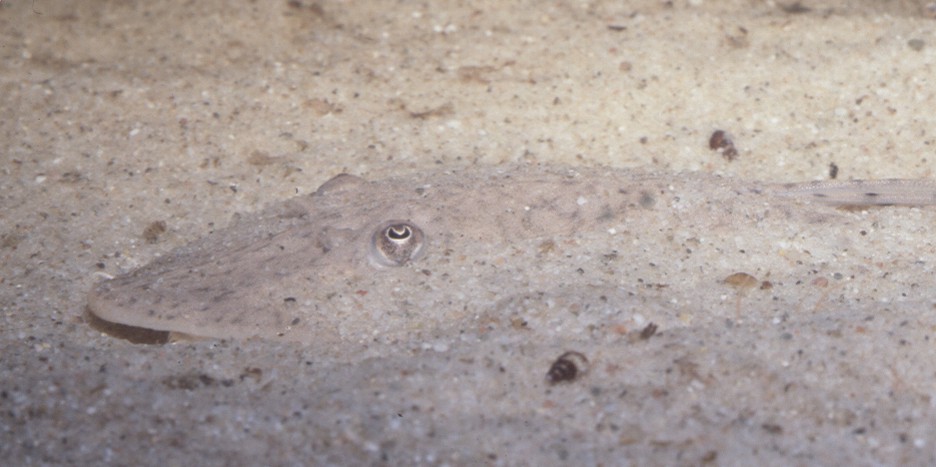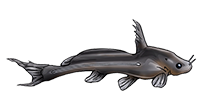Circular Luricaria???
-
Jim Richardson
- Posts: 11
- Joined: 21 Oct 2005, 17:54
- Location 1: Central VA
- Silurus
- Posts: 12420
- Joined: 31 Dec 2002, 11:35
- I've donated: $12.00!
- My articles: 55
- My images: 893
- My catfish: 1
- My cats species list: 90 (i:0, k:0)
- Spotted: 424
- Location 1: Singapore
- Location 2: Moderator Emeritus
-
Jim Richardson
- Posts: 11
- Joined: 21 Oct 2005, 17:54
- Location 1: Central VA
-
Jim Richardson
- Posts: 11
- Joined: 21 Oct 2005, 17:54
- Location 1: Central VA
- Silurus
- Posts: 12420
- Joined: 31 Dec 2002, 11:35
- I've donated: $12.00!
- My articles: 55
- My images: 893
- My catfish: 1
- My cats species list: 90 (i:0, k:0)
- Spotted: 424
- Location 1: Singapore
- Location 2: Moderator Emeritus
-
Jim Richardson
- Posts: 11
- Joined: 21 Oct 2005, 17:54
- Location 1: Central VA
- sidguppy
- Posts: 3827
- Joined: 18 Jan 2004, 12:26
- My articles: 1
- My images: 28
- My aquaria list: 5 (i:0)
- Spotted: 9
- Location 1: Southern Netherlands near Belgium
- Location 2: Noord Brabant, Netherlands
- Interests: African catfishes and oddballs, Madagascar cichlids; stoner doom and heavy rock; old school choppers and riding them, fantasy novels, travelling and diving in the tropics and all things nature.
- Contact:
I can see that you keep it on gravel......
these fish should be kept on a fine sandy substrate, as they will dig themselves in the surface with just the eyes and dorsal sticking out.
they also chew the sand, continuously. sieving it, stirring it. and they 'scratch' themselves in the sand; their whole coloration is the typical "pepper & salt" coloration of a fish living in and on the sand.
not only does it look better, a sand bottom will reduce stress and significantly adds to the time it will last in captivity.
They can and do scar and damage themselves very easily on gravel, and when there are sharper particles in the gravel or when the fish is 'spooked' and tries desperately to 'dive' in the substrate, it can get very seriously wounded.
once wounded these fish do not heal fast or easy; often they succumb.
these fish should be kept on a fine sandy substrate, as they will dig themselves in the surface with just the eyes and dorsal sticking out.
they also chew the sand, continuously. sieving it, stirring it. and they 'scratch' themselves in the sand; their whole coloration is the typical "pepper & salt" coloration of a fish living in and on the sand.
not only does it look better, a sand bottom will reduce stress and significantly adds to the time it will last in captivity.
They can and do scar and damage themselves very easily on gravel, and when there are sharper particles in the gravel or when the fish is 'spooked' and tries desperately to 'dive' in the substrate, it can get very seriously wounded.
once wounded these fish do not heal fast or easy; often they succumb.
Valar Morghulis
-
Jim Richardson
- Posts: 11
- Joined: 21 Oct 2005, 17:54
- Location 1: Central VA
Hi Sidguppy,
On the other half of the tank he is in I have a sand pit with black Onyx which is a very fine substrate. He has taken a look at it and sat on top of the Onyx but so far has not tried to dig; may be to dark for his liking. I will most likely move him in the near future; not to keen on diggers in my planted tanks. What type of sand is good to use in aquariums? I have used very well washed play sand in the past but it was very prone to compaction and eventually fouling the water.
Thanksâ?¦
On the other half of the tank he is in I have a sand pit with black Onyx which is a very fine substrate. He has taken a look at it and sat on top of the Onyx but so far has not tried to dig; may be to dark for his liking. I will most likely move him in the near future; not to keen on diggers in my planted tanks. What type of sand is good to use in aquariums? I have used very well washed play sand in the past but it was very prone to compaction and eventually fouling the water.
Thanksâ?¦
Jim Richardson
- racoll
- Posts: 5258
- Joined: 26 Jan 2004, 12:18
- My articles: 6
- My images: 182
- My catfish: 2
- My cats species list: 2 (i:2, k:0)
- My aquaria list: 1 (i:0)
- Spotted: 238
- Location 1: London
- Location 2: UK
- sidguppy
- Posts: 3827
- Joined: 18 Jan 2004, 12:26
- My articles: 1
- My images: 28
- My aquaria list: 5 (i:0)
- Spotted: 9
- Location 1: Southern Netherlands near Belgium
- Location 2: Noord Brabant, Netherlands
- Interests: African catfishes and oddballs, Madagascar cichlids; stoner doom and heavy rock; old school choppers and riding them, fantasy novels, travelling and diving in the tropics and all things nature.
- Contact:
IMe playsand gets cloggy too, and I tend to combine diggers and plants, then 1cm is too little.
I always use 'riversand'; that's the sand wich is mixed with cement to create concrete.
it's usually mixed with fine and a bit of mediumgravel; wich I sieve out of it.
If you have the right kind of sand, it's created by water-erosion and dug out of old deposits near rivers in sandpits.
it's dirtcheap, but also dirty a fair bit of washing is in order, because it usually contains clay.
a fair bit of washing is in order, because it usually contains clay.
harmless but clouds the water.
another asset of riversand is that it's not 1 color like playsand; it's a bit more 'salt & pepper', wich gives a natural look to the tank.
it's slightly coarser than playsand and I use 3-4 cm layers with no clogging problems whatsoever.
I had Rhineloricaria latirostris sinking in such sand, right to the bottom of the tank in seconds
ofcourse if you do NOT use live plants, or attach the plants to pieces of wood (Javafern, Anubias) or float (Pistia, Oakleaf Fern, Duckweed), 1 cm is perfect; you can still see your fish.
the result in your tank will look like this!



I always use 'riversand'; that's the sand wich is mixed with cement to create concrete.
it's usually mixed with fine and a bit of mediumgravel; wich I sieve out of it.
If you have the right kind of sand, it's created by water-erosion and dug out of old deposits near rivers in sandpits.
it's dirtcheap, but also dirty
harmless but clouds the water.
another asset of riversand is that it's not 1 color like playsand; it's a bit more 'salt & pepper', wich gives a natural look to the tank.
it's slightly coarser than playsand and I use 3-4 cm layers with no clogging problems whatsoever.
I had Rhineloricaria latirostris sinking in such sand, right to the bottom of the tank in seconds
ofcourse if you do NOT use live plants, or attach the plants to pieces of wood (Javafern, Anubias) or float (Pistia, Oakleaf Fern, Duckweed), 1 cm is perfect; you can still see your fish.
the result in your tank will look like this!

Valar Morghulis
- MatsP
- Posts: 21038
- Joined: 06 Oct 2004, 13:58
- My articles: 4
- My images: 28
- My cats species list: 117 (i:33, k:0)
- My aquaria list: 10 (i:8)
- My BLogs: 4 (i:0, p:97)
- Spotted: 187
- Location 1: North of Cambridge
- Location 2: England.
In the UK, "sharp sand" is used for mixing with cement to make concrete, and it's definitely what it says on the label: sharp. Not only does it contain big chunks of crushed stone, but the remaining fine sand is also quite sharp... I would think this varies greatly across different countries...
--
Mats
--
Mats
-
characinkid
- Posts: 193
- Joined: 02 Sep 2003, 22:02
- I've donated: $29.00!
- My cats species list: 10 (i:0, k:4)
- My aquaria list: 2 (i:0)
- My BLogs: 4 (i:3, p:202)
- My Wishlist: 5
- Spotted: 10
- Location 1: New England USA
- Location 2: NH USA
Hi
A little advise on these guys. I have been keeping a group of 4 of them for about 1 year at the moment, be sure that you feed plenty of meaty foods, these fish eat very little veggies. Mine love bloodworms, blackworms, small sinking pellets...
If you want any more info let me know, they are great fish...
A little advise on these guys. I have been keeping a group of 4 of them for about 1 year at the moment, be sure that you feed plenty of meaty foods, these fish eat very little veggies. Mine love bloodworms, blackworms, small sinking pellets...
If you want any more info let me know, they are great fish...
Too Many Tanks... Too Many fish... not enough time!!!






